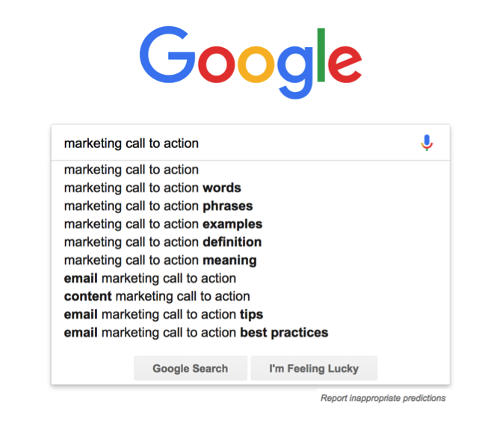Content marketers sell with content. We're not primarily media creators—we're salespeople who use content as our weapon of choice.
Our job is to create content that produces business results. To do that, we have to convert our audience into customers.
There are a million reasons why marketing fails to drive sales. However, one of the most common is a misconception so subtle that many of us accept it without a challenge.
Somewhere along the way, many marketers got a terrible idea drilled into them. We know content is supposed to be helpful, but we fell for the notion that being helpful means never actually selling our products or services.
Yes, the content marketer's job is to be helpful. However, being helpful will nearly always involve positioning your product or service.
If your company is in business, it is already helpful. Your job is to connect your company's proven solutions with your prospect's solvable pain.
I get it: Content marketers love the soft-sell to provide value. But if you never turn the corner and position your product, you're neither marketing anything nor being as helpful as you can truly be.
You have to find a way to generate business value. And that means understanding that content marketing and real calls-to-action (CTAs) are more than compatible—they're mutually sustaining.
That's why strong CTAs are a bedrock piece of my entire content marketing formula.
Here are three ways to use customer research to craft better CTAs.
1. Google
The best CTAs will use the actual words your customers use in relation to your products or services. Let's begin with how to use Google for research and listening.
Simply enter the keywords related to your topic, then look for both the content that currently ranks and the autocomplete searches.
The top-ranking pages will help you understand the problems your audience is experiencing (from their point of view) and the words they use to describe them.
That content will help you discern what's called searcher intent, or the reason behind someone's search to begin with. What pain were they trying to solve when they typed in those phrases?
Next, the autocomplete phrases help by suggesting alternative, or related, phrasing for a query, which will also help you find customer phrasing and language surrounding a search term. Those words and phrases are also the ones visitors will use when searching for a solution.

2. Blog Comments
While you're reviewing the top search results for keywords, you'll find a companion research method.
Blog post and article comments are a treasure trove of audience insight. They offer a way to gather qualitative data that is freely available. In the comments section, you can both read your audience's actual words and uncover their specific questions as well.
You'll be able to view their actual words and see what education gaps still remain after consuming a piece of content. (Bonus: you can also read how your competition is responding to them.)
With just a few searches, a bit of scrolling, and some reading, you can have insight that may be as valuable as a survey.
As you read, keep track of key phrases and questions.
For example, imagine you work for a consultancy that offers social media management. In this case, you're competing with other agencies, consultancies, freelancers, and even self-serve tools.
A quick scroll into the comments section on this Social Media Examiner article, "5 Social Media Management Tools to Save Time," shows a common thread readers are looking for: The readers' comments suggest they have frustrations with current tools and are unclear why they should choose one tool over the other.
With just a cursory perusal, you can lift verbatim statements, such as "I'm frustrated with [X tool] because the drawbacks outweigh the benefits." In that single sentence, you can learn...
- What the customer pain is: frustration with current social media management tool
- Which competing solution is failing: X tool
- Why the solution is failing: drawbacks outweigh the benefits
The commenter goes on to add that he/she need to know what other options are out there, how they compare to each other, differences, and what platform he/she can use.
Now you have insight into customer pain, language, and intention. As an example, we can adapt that target audience language into this CTA with confidence: "Stop being frustrated with your current tools—download your free toolkit now!"
The key is pinpointing the pain (frustration), its source (current tools), and your solution (free toolkit).
3. One-On-One Customer Interviews
Although those research methods allow you to look outside of your current audience and customer base, don't neglect talking to the people who already know, like, and trust you.
Customer interviews are a powerful way to learn exactly how your customers express their needs, describe your solutions, and think about your products. Simply put, you want to have a conversation to hear their language.
When you grab keyphrases your customers actually use, you can directly connect with them—and people who are like them. Rather than making their eyes glaze over with blandvertising, your value will be communicated clearly.
When you can harness customers' actual words, you can grab attention and infuse your CTAs with compelling copy.
When I'm able to talk one-on-one with my customers via user groups, surveys, or even phone conversations, I always like to ask these five questions:
- What prompted you to start looking for a solution like {your product}?
- Why did you choose {your product}?
- What is the most significant difference {your product} is making in your business today?
- How would you {briefly} describe {your product} to someone else?
- What is the single greatest benefit {your product} provides?
The answers to those questions will set the tone for your CTAs and let you speak directly to customers using their own language.
Writing Your Research-Powered CTAs
Being able to describe the benefit of your product or service by using language that your audience actually uses is extremely valuable and appealing. It's also a brilliant way to tailor your messaging to your customers' unique motivations.
However, what's most important is that it's a way to get comfortable asking for the sale. The closer you can marry your messaging and value with the way your audience expresses their needs, the more confidently you can call them to profitable customer action.




